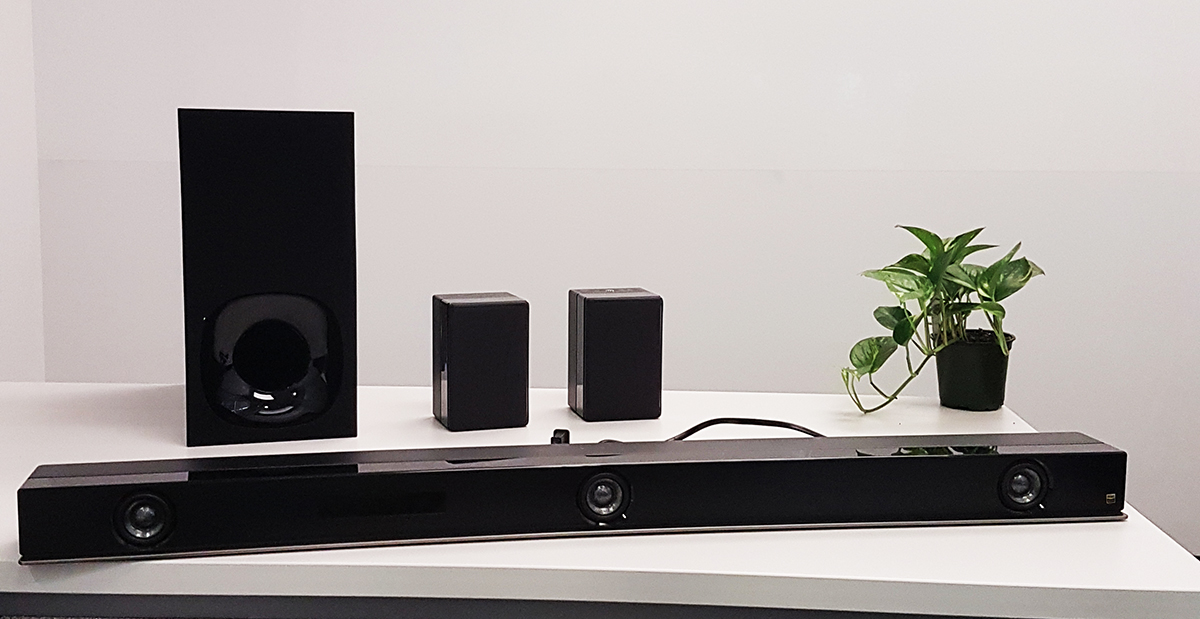

- DOLBY ATMOS SOUND SYSTEM HOW TO
- DOLBY ATMOS SOUND SYSTEM MOVIE
- DOLBY ATMOS SOUND SYSTEM DRIVERS
- DOLBY ATMOS SOUND SYSTEM PLUS
However, some recent model TVs capable of decoding Dolby Atmos can pass the Dolby Digital Plus encoded Atmos signal to an audio system via ARC.įor a more traditional wired setup, look for a Dolby Atmos ready AV receiver paired with separate speakers. While this can work in an ideal symmetrical room environment with flat walls and ceilings, every living room is different which leads to an inconsistent experience depending on your configuration.Īlso, if you are passing Dolby TrueHD encoded Atmos signals through a TV to an external audio system, the TV and the audio system need to be equipped with eARC to handle the additional bandwidth.

DOLBY ATMOS SOUND SYSTEM DRIVERS
A Dolby Atmos capable sound bar or TV would be reliant on speaker drivers pointing towards your ceilings and walls to bounce sounds to create the perception of surround sound. To start, Dolby Atmos can be found in some soundbars and TVs, but obviously there would be limitations in recreating spatial sound coming from a slim bar sitting below your TV. 4) designates the number of ceiling-mounted or up-vertically-firing speakers required to hear overhead effects accurately. Horizontally placed speakers (left/right/center front and surrounds) are the first number (3, 5,7,9, etc.).
DOLBY ATMOS SOUND SYSTEM HOW TO
Here is how to translate this number system: Instead of the 3.1, 5.1, 7.1, 9.1 designations, you will see descriptions such as 3.1.2, 5.1.2, 5.1.4, 7.1.2, 7.1.4, etc…The more channels and speakers that can be used, the more precise the spatial positioning.

With Dolby Atmos surround sound channel/speaker placement is described differently than what you may be accustomed to. Using Dolby Atmos in a Home Theaterįor the home environment, the number of speakers required to support a 64-channel theatrical version isn't practical, so Dolby has provided a way for Dolby Atmos soundtracks to be scaled down to fit the number of channels and speakers that may be available in a variety of home theater setups.
DOLBY ATMOS SOUND SYSTEM MOVIE
It also provides more pinpoint location accuracy for stationary sounds.Īlthough having started out for use in commercial movie theaters, Dolby Atmos has been scaled down to provide a similar experience for home users. It results in the smooth flow of sounds as they move through a movie theater auditorium. Front, side, rear, back, and overhead speakers are combined with an audio algorithm designed to immerse the listener within a 3D bubble of sound.Įxamples of Dolby Atmos use include effects such as wind, thunder/lightning, rain, planes, helicopters, and other sounds that actually come from overhead with more accurate distance cues than can be achieved with traditional surround sound layouts. The commercial version of Dolby Atmos provides up to 64-channels to work with. The receiver/processor then assigns the decoded spatial elements based on the channel/speaker setup used. The bitstream is then decoded by a special chip in a home theater receiver or AV processor. Of course, to hear the results, you still need speakers.Īfter assigning sound object placement, the information is placed into metadata that, in turn, is delivered through a bitstream encoded on a Blu-ray Disc or in a streaming movie or program. This means that Dolby Atmos is an object-based surround sound format, rather than strictly a channel-based format. Instead of assigning sound elements to specific channels or speakers, each sound element (as decided by a movie sound mixer) is assigned to a spot in 3D-dimensional space (this is where the spatial coding process comes in). What makes it different is that it uses a special type of spatial coding so that the surround sound experience is more immersive than previous formats. One format getting a lot of attention is Dolby Atmos.ĭolby Atmos is one of a long line of surround sound formats developed by Dolby Labs. There are dozens of surround sound formats available for use in home theater setups, along with traditional stereo.


 0 kommentar(er)
0 kommentar(er)
